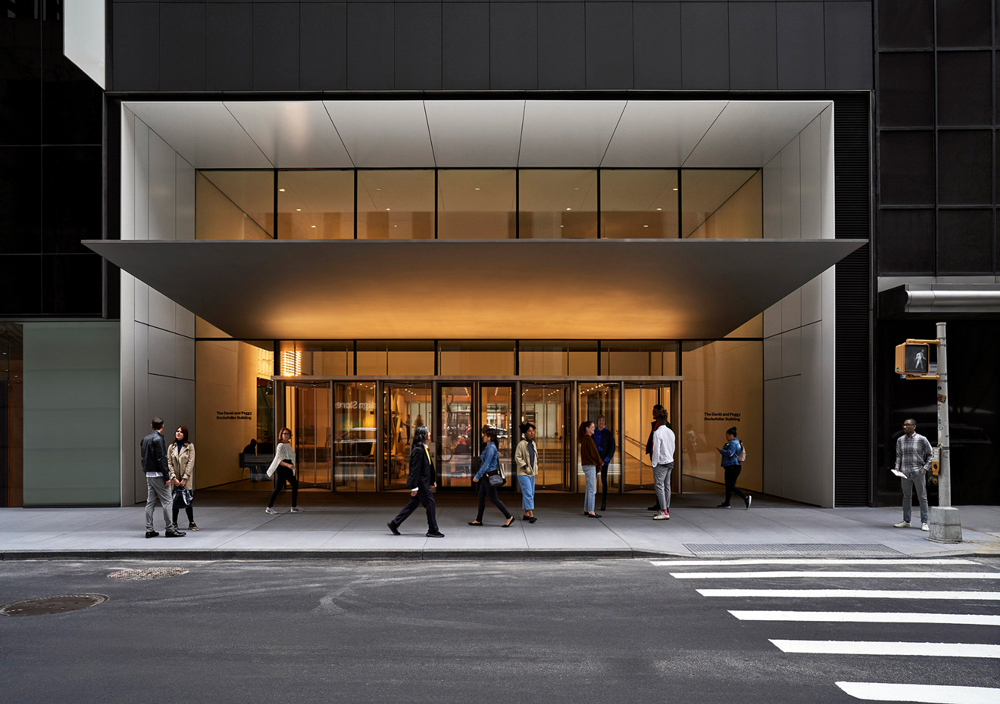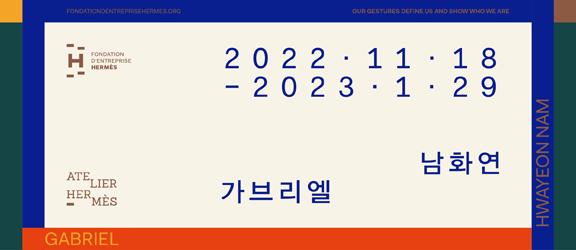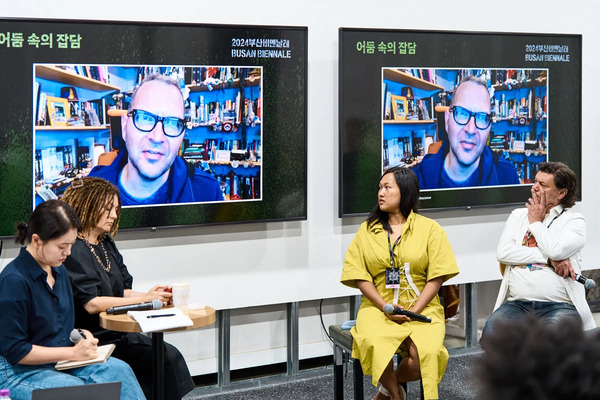The International Art Exhibition–La Biennale di Venezia is back after being delayed a year due to the pandemic. Along with the main exhibition The Milk of Dreams, seventy-nine participant countries will develop their national pavilions for this year’s biennial.
The Korean pavilion is scheduled to hold an official opening ceremony at 4:30 pm on Wednesday, April 20. The main exhibition runs from April 23rd to November 27th.
 Homepage image of the Korean Pavilion 2022. 2022 Venice Biennale.
Homepage image of the Korean Pavilion 2022. 2022 Venice Biennale.Art critic and curator Young-chul Lee (b. 1957) was appointed as the artistic director of the Korean pavilion to present Gyre. A group of seven large-scale kinetic installations by artist Yunchul Kim (b. 1970) will be featured in the exhibition.
Suggested by Yunchul Kim, the term ‘gyre’ comes from the first phrase of “The Second Coming,” a poem written by Irish poet and Nobel Prize winner William Butler Yeats: “Turning and turning in the widening gyre / The falcon cannot hear the falconer.”
The poem was written in 1919 in the aftermath of World War I and the beginning of the Irish War of Independence. The poet describes this unsettling time of the modern world in terms of these gyres, believing that it has reached the end of the outer gyre and that it is in a turning point moving towards the inner gyre.

Yunchul Kim, 'Argos,' 2018. Courtesy of the artist. Photo: Mark Blower
To Kim, a gyre, a cone‑shaped spiral, is a signifier that represents continuity and disconnection, stability and instability, pause and motion, and infinite opening and infinite depression, as well as being a shape reminiscent of planetary orbits and various natural phenomena occurring on the Earth.
In other words, Gyre refers to the recent global changes that have greatly altered conventional wisdom and created new structures and circumstances atop of its implications regarding energy, matter, life, and the universe.

Yunchul Kim, 'Argos,' 2018. Courtesy of the artist. Photo: Studio Locus Solus
The seven featured works will be centered around three themes: the Swollen Suns, the Path of Gods, and the Great Outdoors. The exhibition is set up as a breathing body or an alternative universe where each work is interconnected, and the works are powered by invisible matter to give visitors alternative views of the fluxional world.
The Swollen Suns is used as a metaphor for the cycle of life, especially of stars; as a star ages, it swells into a glowing red giant that will end in a huge explosion, leaving behind tiny, dense stars. The Path of Gods, which also means nerve in Korean, refers to the mediums of the heavens and the earth as well as the blood vessels and nerves of the body. The Great Outdoors is a theme that reflects the boundaries of cosmic signs and traces through materials.

Yunchul Kim. Courtesy of the Artist and the Arts Council Korea.
Yunchul Kim is an artist and an electronic music composer, and his practice spans art, literature, mythology, philosophy, and science. He creates artworks with invisible substances to examine the ‘world of materials.’ For the artist, matter is not an object opposite to consciousness or a concept, nor is it separate from the universe or a fixed object. Instead, it is something that is in the process of being constantly intertwined, perpetually interacting and changing.
Kim has held exhibitions at new media art-related institutions, such as FACT in the UK, ZKM in Germany, and Ars Electronica in Austria. He is the winner of the 2016 Collide International Award at CERN and has been awarded by VIDA 15.0, Arts Electronica in 2006, and Transmediale in 2004.
Gyre will be available as a 3D virtual exhibition on a web-based platform, the VOV, beginning in June.

























